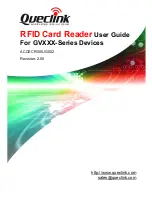
ACS-1E and ACS-1EUL Installation
Controller Box Installation
12
ACS-1E and ACS-1EUL Install and Service Manual
Ver 2
• AC power sources properly sourced to an approved AC electrical utility box with an appropriate
fuse (or cut-out) having a rating of at least 5 amps or more for the wire lines used.
• For above-ceiling and other installations lacking nearby power, the client must enlist a
locally-licensed electrician to install the appropriate wiring extensions, terminal boxes, and
wall-socket hardware that will meet the local, standard fire codes.
• For states and cities with Low Voltage Electrical requirements, the client must enlist a licensed Low
Voltage Installer to run the power supply wires and control-cabling for the Controller’s door-locks
and switches. This ensures that the installation will meet all local fire codes.
• Use of a Uninterruptible Power Supply (UPS) is highly recommended
CAUTION: An ESD strap must be worn at all times when installing or servicing an ACS-1E or ACS-1EUL
controller.
3.1.2.1 200-240 VAC Power Locations
For areas using 200-240 VAC 50-60Hz services, make sure the following conditions are met before start-
ing any ACS-1E or ACS-1EUL installations:
• Check the label on the controller power supply to ensure it will operate properly on the 200-240
VAC service. The controller power supply uses a switching-mode regulator with a wide range of AC
input voltages (usually 100-240 VAC). However, not all power supplies vended by Parabit Systems
will automatically handle the higher voltage.
For power supplies handling door-locks and similar items, check the product paperwork for the correct
adjustments that allow them to safely operate on 200-240 VAC.
• Ensure the appropriate plug-converters are in place to safely connect to the 200-240 VAC socket
hardware.
• Enlist locally licensed electricians when necessary, as all ACS-1E and ACS-1EUL installations should
adhere to local electrical and fire safety codes.
3.1.3 Mounting the Controller Box and Routing Wires
The ACS-1E Controller box contains 4 mounting holes to secure the box to a wall or controller and 5
knock-out holes for routing wires into the box from the top controller, the right-hand side controller and
rear controller.
Before mounting the controller box, establish which input and output terminations on the circuit
boards will be used. If you are using a Second Reader Board (optional) or I/O Board (optional), deter-
















































